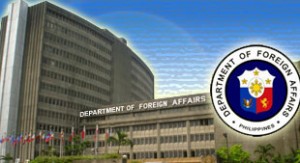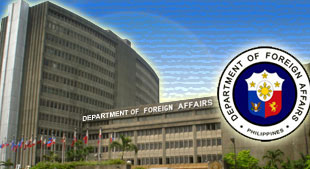 MANILA, Philippines – The many languages of the Philippines are a reflection of the Filipino people’s dynamism, flexibility, and adaptability, Felipe de Leon Jr., chairman of the National Commission for Culture and the Arts (NCCA), said during the opening of an exhibit celebrating “Buwan ng Wika (Language Month)” in the Department of Foreign Affairs (DFA) building in Pasay City.
MANILA, Philippines – The many languages of the Philippines are a reflection of the Filipino people’s dynamism, flexibility, and adaptability, Felipe de Leon Jr., chairman of the National Commission for Culture and the Arts (NCCA), said during the opening of an exhibit celebrating “Buwan ng Wika (Language Month)” in the Department of Foreign Affairs (DFA) building in Pasay City.
“We have one of the most affixated languages in the world. English has very few affixes [while] Malay has only 35 affixes,” de Leon told reporters at the sidelines of the opening of the exhibit at the DFA main lobby that will run from August 6 to 16.
“Tagalog alone has around 800 affixes,” he added. Affixes are word elements such as prefixes and suffixes that are added to root words to change its meaning.
He cited as an example the many variations of the English word “eat” compared to the Tagalog word “kain.”
“With English you get ‘eat, ate, eating, eaten’ but with Tagalog you have ‘kain, kumain, kinain, nakakain, ikain, nagkainan’ so many hundreds of conjugations,” de Leon said.
“That means we are a very flexible people, the more conjugations there are, the more verb forms there are, the more flexible people are. That means the presence of so many verb forms in our country means that we are a very dynamic, flexible, adaptable people [and] very creative,” he said.
Constantly Evolving
De Leon believes that the Filipino language will evolve by absorbing new words as well as creating new words to further enrich the Philippine vocabulary.
He cited such language phenomenon like the “jejemon” and “gay” lingo which, in the future, might become the normal language.
“We have to keep up with the times, there’s the new language, “jejemon” language like “ligo na me”, these are the languages our people speak,” de Leon said. “These are new influences, radio, television, internet and we need new words for all of these, many new experience require new words.”
“Definitely the vocabulary of any language is enriched by these colloquial language including sward speak. Some of these [words] will become part of the classical dictionary of tomorrow and we will not even recognize them as sward speak [anymore], because there is a saying, the stranger of today will be the native of tomorrow,” he added.
De Leon cited the jeepney as an example of how the language was a stranger before but became a normal thing in present times.
“The jeepney of now came from an American very drab-looking olive green jeep that you don’t associate anymore with the jeepney of today,” de Leon said. “Change is the only permanent thing.”
Future of Filipino Language
When asked what the direction of evolution the Filipino language will take, de Leon said that it will likely absorb more and more words from the regional languages as well as from foreign languages.
“The direction of our language is to get more and more words from the different languages. To make our language really national, all the words that are not present in Manila Tagalog should be added to it, words from Ilonggo like “gahum” which means hegemony and “gaba” in Cebuano which means karma,” de Leon said.
“There are many words in the regions that are not found in Manila Tagalog,” he added.
Foreign words like “career” have also been absorbed by the Filipino language and turned it into “karirin” which means to exert all effort in a particular endeavor.
“Who will understand that if you hear it for the first time? Later it became part of the regular vocabulary and could no longer be recognized as coming from an English word,” de Leon said.
He also cited the Filipino’s use of the word “salvage” to mean “summary execution or killing,” which was vastly different from the English meaning of the same word.
“There is a word in Spanish “salvahe,” which means wild untamed. When we used the same word we gave it a different meaning, “salbahe” which came to mean a person who is bad,” de Leon said.
When a person is a “salbahe” to another person, it came to mean some kind of bullying or abuse, he said.
“Nagpapacute tayo (We’re playing cute), so we used the English pronunciation, ‘sinalvage’ kaya nagkaroon ng noun na ‘salvage’, which has a totally different meaning from the English word,” de Leon said.
That assimilation of a foreign word and subsequent change of meaning to fit the culture is how language evolves, he said.
“We are lucky because no matter how many words from the Philippines regional languages, or from foreign languages such as English, Chinese, and Spanish, are assimilated into our national language … we will not lose the very core of our language,” de Leon said.
The DFA exhibit featured sculptures and a wall where foreign dignitaries can write in their own language. It also showcased paintings, preserved documents from the Spanish era, and various Filipino terms like “hoy,” “chorva,” and “bongga” painted on the floor of the lobby.









































